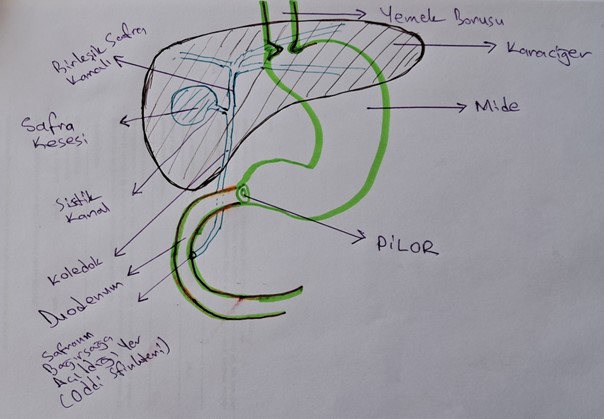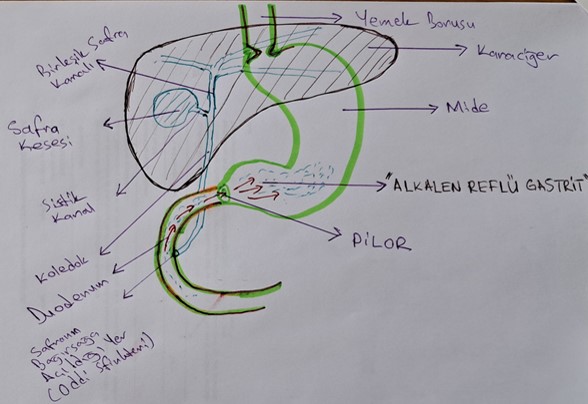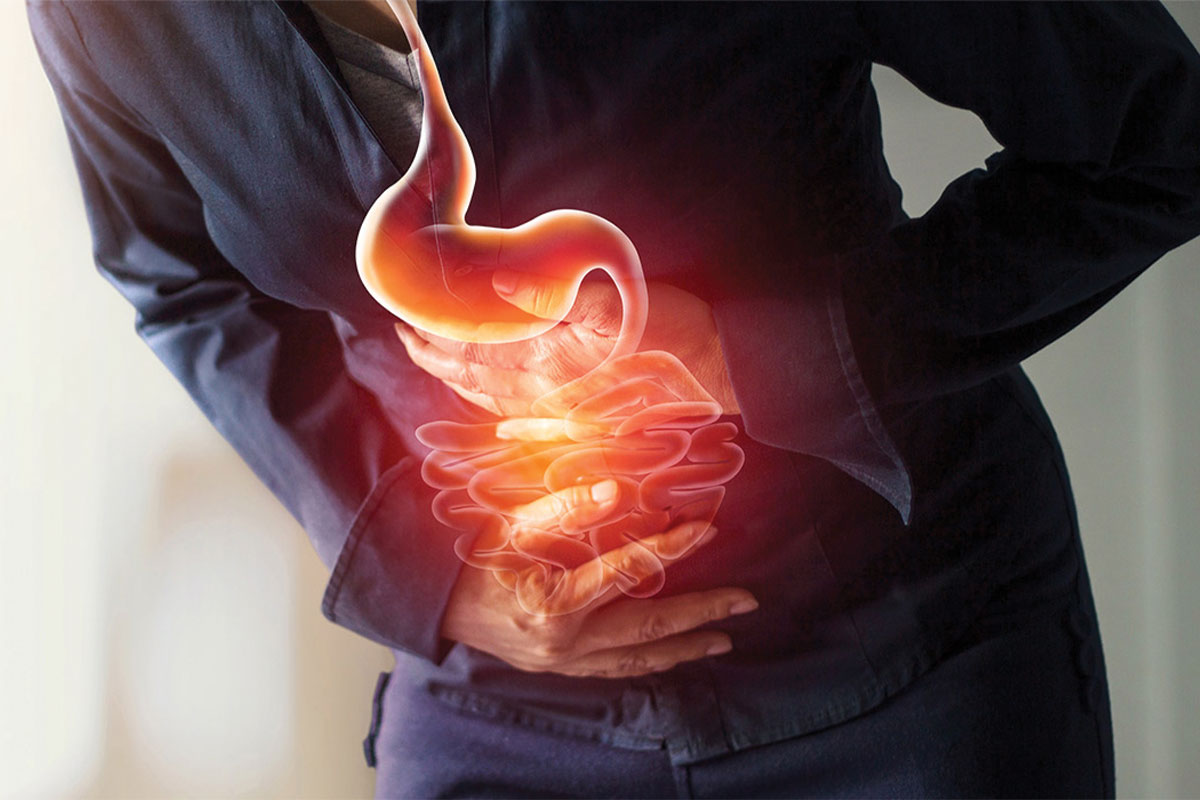ALKALINE REFLUX GASTRITIS is a chemical burn in the stomach after the contents of the duodenum (duodenum) recoil into the stomach. In every person, some dodenal content can enter the stomach and do not cause any discomfort; This condition is called “Physiological Bile Reflux”.
We call the structure PILOR, which consists of a muscle bundle at the exit of the stomach, controls gastric emptying, prevents back leakage, is a kind of valve (valve), and is functionally a sphincter (contraction-relaxation). Our stomach is a preliminary storage area for the food we eat and drink. Food stored in the stomach undergoes chemical, physical and enzymatic digestion and is sent to the small intestines. After the digestion process of the food in the stomach, the stomach content becomes ready to be discharged into the small intestine. This pre-digested content of the stomach is called chyme. After chyme is formed, a warning goes from the stomach to the brain. This warning is the message that I have completed my pre-digestion, you can now empty the stomach slowly. Thereupon, with the signals coming from the brain, the stomach transfers approximately 50-75 cc of CHIMUS to the duodenum at 3-5 minute intervals with periodic movements of the stomach muscles, which we call milking contraction. Milking contractions of the stomach and simultaneous opening of the pylorus continue at rhythmic intervals until the stomach is emptied. After eating, the time that food spends in these processes in the stomach is 2-4 hours. Food is completely emptied from the stomach four hours after eating.

Storing, digesting and evacuating its contents at regular intervals in the stomach, as described above, is possible with the functional PILOR. Normally, simultaneously with the excretory (milking) contractions of the stomach, the pylorus relaxes and opens, and the stomach contents are transferred to the duodenum. However, the pylorus does not function functionally to the same extent in every person. During the endoscopy examination, if the pylorus is completely closed and there is no bile (green liquid) in the stomach, we define it as NORMOTONIC PYLORIS (normal structure). In people with normotonic pylorus, when the tip of the endoscope lightly touches the pylorus surroundings during endoscopic examination, the pylorus closes completely. During endoscopic observation, if the pylorus closes upon stimulation with the endoscope tip but remains partially open, we define this situation as HYPOTONIC (Partially Closing) PYLOOR. In cases of hypotonic pylorus, partially bilious content can be observed in the stomach. In the endoscopic examination, if the pylorus is completely open and does not contract or close at all with the mechanical stimulation made around the pylorus with the endoscope tip, this situation is called ATONIC (non-functional) PYLOOR. In cases of atonic pylorus, bilious content is often found in the stomach.

In order to understand the mechanism of Alkaline Reflux Gastritis formation, we need to briefly talk about bile and gallbladder functions. Approximately 1000-1500 cc (1-1.5 liters) of bile is produced by the liver per day. The bile produced flows into the duodenum through the bile ducts. The place where it flows into the duodenum is approximately 10-12 cm ahead of the stomach exit. Bile, which is normally produced and flowed into the duodenum through the bile ducts, does not pass directly into the duodenum. There is a GALLBLADDER on the bile duct, which is the primary storage site for bile. Bile is produced continuously from the liver, regardless of the foods we eat, but bile flow to the duodenum increases or decreases depending on the need for bile from the foods we eat. Normally, the bile produced during the day first comes to the GALLBLADDER and is concentrated tenfold (1/10) and stored there. After this concentration, 1000-1500 cc of bile turns into 100-150 cc of concentrated bile and as a result, the amount of bile flowing into the duodenum is 100-150 cc. In cases where the volume to concentrate and store bile from the liver decreases due to stones or other formations in the gallbladder, the volume of bile flowing into the duodenum increases. In people with gallstones, a higher volume of bile (150 cc ↑) will flow into the duodenum compared to normal people, and accordingly, more ALKALINE REFLUX GASTRITIS will be observed in these people than normal. In people whose gallbladder has been removed in some way, bile flows directly into the duodenum without any concentration, independently and uncontrolled from our eating and drinking periods. Thanks to the gallbladder, the speed of passage of stomach contents into the duodenum and the need for bile of the stomach contents passing into the duodenum are determined and concentrated bile is transferred to the duodenum as much as necessary. After the gallbladder is removed, 1000-1500 cc of bile, 10 times the normal volume, continuously flows into the duodenum without any perception of need. That’s why people with hypotonic and atonic pylorus typically state that their complaints ease when they eat and increase when they starve. However, in advanced cases, complaints become persistent regardless of hunger and satiety.
When most of the volume of the gallbladder is occupied by stones and cannot provide adequate storage and concentration, or when the gallbladder is removed for any reason, due to the increase in the volume of bile flowing into the duodenum, bile leaks back into the stomach more intensely in people with HYPOTONIC and ATONIC pylorus, and they experience ALKALINE REFLUX GASTRITIS. emerges or the existing situation becomes even more severe. The biochemistry of the stomach is an acidic environment (pH: 1.5-2), while the duodenum is basic (alkaline) (pH: 8). If duodenal contents leak into the stomach, which is used to an acidic environment, it will cause BASIC CHEMICAL BURN in the stomach. Basic burn is the same type of damage and burn caused by bleach. This situation occurs as a result of PILOR function deficiency.
In people with ATONIC pylorus, bile leakage into the stomach occurs even if there are no stones in the gallbladder or if the gallbladder is not removed. The rate of ATONIC pylorus in the society is 3-5%. Bile leakage is also observed in people with HYPOTONIC pylorus, although less frequently than atonic ones, under normal conditions. The rate of HYPOTONIC pylorus in the society is about 8-10%. However, in patients with ATONIC and HYPOTONIC pylorus, severe ALKALINE REFLUX GASTRITIS due to bile leakage occurs after the gallbladder is removed and this rate is approximately 15%. In these cases, an attempt is often made to reduce the complaints by giving medication. However, in cases where drug treatment is insufficient, surgeries are performed to prevent duodenal content from leaking into the stomach. With the surgery called “Duodenal Switch”, bile leakage into the stomach is prevented. However, this surgery is an extremely complex, anatomically disruptive and risky procedure. It should be used as a last resort.
As a surgeon who has performed “Duodenal Switch” surgery on ALKALINE REFLUX GASTRITI patients for years, I developed the method I call “PYLOOR REVISION” after my clinical research on whether there could be a simpler method for this. I published my clinical research results in peer-reviewed American Medical Journals.
https://link.springer.com/article/10.1007/s11695-020-04556-7
With “PYLORIC REVISION”, leakage in the pylorus is prevented by endoscopically filling injections around the pylorus in cases with atonic and hypotonic pylorus. The procedure is completed in approximately 20 minutes under sedation, without the patient feeling anything. 2 hours after Pyloric Revision, people can continue their daily lives without any restrictions. Maximum effectiveness occurs 24-48 hours after the procedure is applied. The injection filling material does not cause any temporary or permanent harm to the patient.
In our academic clinical studies, the effectiveness of the “Pyloric Revision” performed in the control endoscopy of the patients to whom we performed “Pyloric Revision” during an average follow-up period of 32 months still continues in 92% of the patients.
If no longer effective cases are detected, repeat endoscopic pyloric revision does not have any side effects.
“PYLORIC REVISION” is a very important development in the treatment of ALKALINE REFLUX GASTRITIS in that it is fast, simple, cheap, risk-free, repeatable and non-surgical.
Assoc. Prof. Murat KANLIÖZ
General surgery specialist

